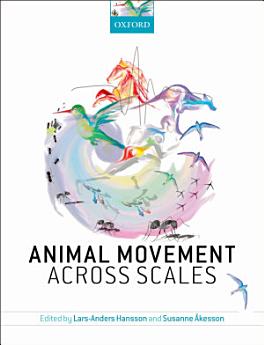Animal Movement Across Scales
Lars-Anders Hansson · Susanne Akesson
Aug 2014 · OUP Oxford
eBook
360
Pages
family_home
Eligible
info
reportRatings and reviews aren’t verified Learn more
About this eBook
Movement, dispersal, and migration on land, in the air, and in water, are pervading features of animal life. They are performed by a huge variety of organisms, from the smallest protozoans to the largest whales, and can extend over widely different distance scales, from the microscopic to global. Integrating the study of movement, dispersal, and migration is crucial for a detailed understanding of the spatial scale of adaptation, and for analysing the consequences of landscape and climate change as well as of invasive species. This novel book adopts a broad, cross-taxonomic approach to animal movement across both temporal and spatial scales, addressing how and why animals move, and in what ways they differ in their locomotion and navigation performance. Written by an integrated team of leading researchers, the book synthesizes our current knowledge of the genetics of movement, including gene flow and local adaptations, whilst providing a future perspective on how patterns of animal migration may change over time together with their potential evolutionary consequences. Novel technologies for tracking the movement of organisms across scales are also discussed, ranging from satellite devices for tracking global migrations to nanotechnology that can follow animals only a millimetre in size. Animal Movement Across Scales is particularly suitable for graduate level students taking courses in spatial animal ecology, animal migration, and 'movement ecology', as well as providing a source of fresh ideas and opinions for those already active within the field. It will also be of interest and use to a broader audience of professional biologists interested in animal movements and migrations.
About the author
Lars-Anders Hansson teaches aquatic ecology at Lund University and also leads a team at the Centre for Animal Movement Research (CAnMove) which aims to develop techniques, such as nano-scaled tracers, to track individual micro-organisms such as zooplankton in order to answer key questions about migratory behaviour. Susanne Akesson teaches evolutionary animal ecology and ornithology at Lund University. In 2005 she was elected as a Fellow of the Royal Institute of Navigation (FRIN) and since 2008 has been the coordinator of the Linneaus program Centre for Animal Movement Research (CAnMove) at Lund University financed by a ten year grant from the Swedish Research Council and Lund University.
Rate this eBook
Tell us what you think.
Reading information
Smartphones and tablets
Install the Google Play Books app for Android and iPad/iPhone. It syncs automatically with your account and allows you to read online or offline wherever you are.
Laptops and computers
You can listen to audiobooks purchased on Google Play using your computer's web browser.
eReaders and other devices
To read on e-ink devices like Kobo eReaders, you'll need to download a file and transfer it to your device. Follow the detailed Help Centre instructions to transfer the files to supported eReaders.





